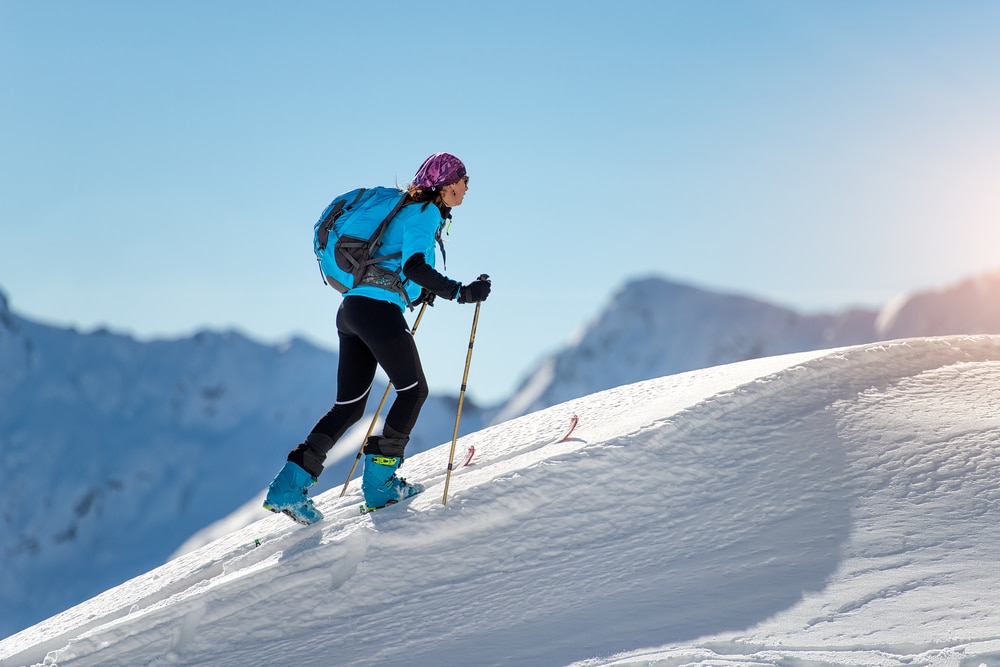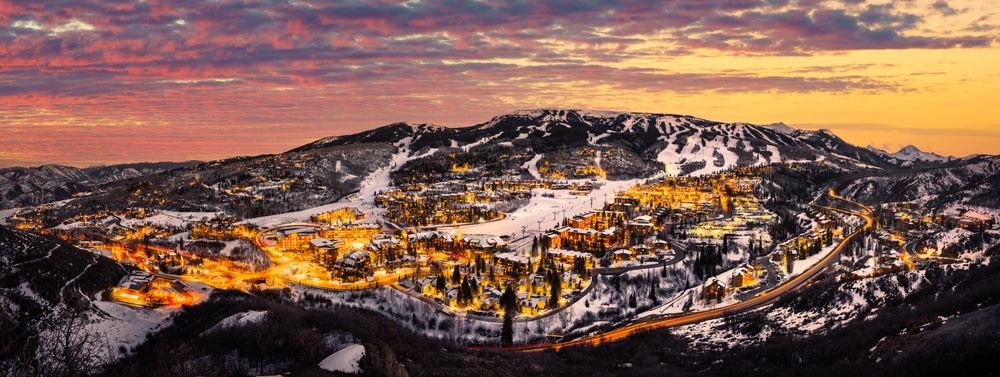Skiing adventures are always thrilling but physically demanding at the same time. Like traditional downhill skiing, uphill skiing is also gaining popularity among outdoor sports, which requires skiers to ascend slopes under their own power. Also known as alpine touring, this activity is an excellent way to explore the mountains, stay fit, and avoid the crowds commonly found at ski resorts. However, mastering the climb requires specific skills, techniques, and equipment. In this guide, we’ll cover the essential tips and techniques to master the climb, including the best skiing gear, uphill skiing equipment, and strategies for tackling steep slopes.
What is Uphill skiing?
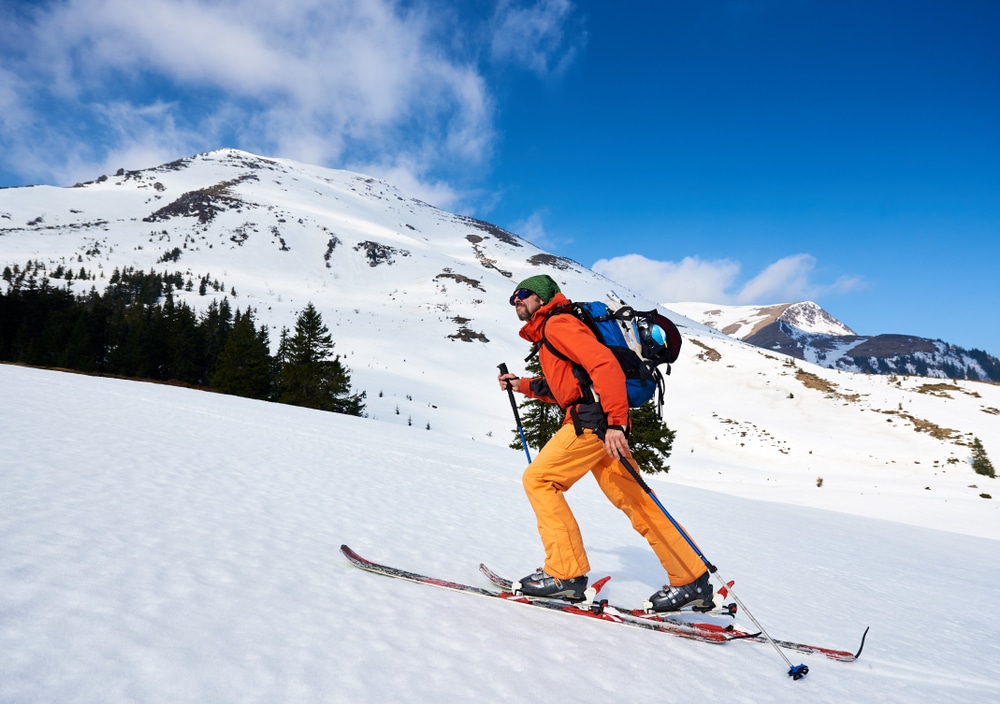
Uphill skiing, also known as alpine touring, involves using specialized uphill skis and equipment to climb mountains without the assistance of lifts. Like conventional downhill skiing, you can enjoy the descent after reaching the summit. The primary difference lies in the ascent, where skiers use skiing gear designed for uphill travel.
Essential Skiing Gear for Uphill Skiing
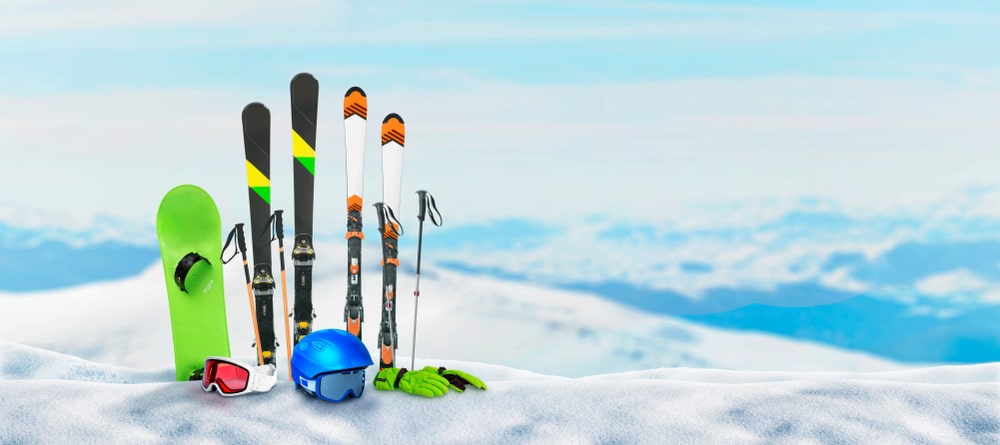
Having the proper equipment is essential for skiing uphill. Your uphill ski setup should include Alpine touring skis, uphill skis, skinning skis, and accessories to improve your climbing efficiency.
Alpine Touring Skis
Alpine touring skis are lighter than standard downhill skis and are made for both climbing and descending. Typically, bindings for alpine touring skis allow the heel to lift on the ascent and lock down on the descent.
Skinning ski
Also called climbing skins, these skis grip the snow during ascents. They give you traction on the snow and fasten to the bottom of your uphill skis.
Uphill Ski Setup
Your uphill ski setup will include a lightweight backpack, adjustable poles, and boots with a walk/ski mode switch.
Walk Mode
This function of uphill skiing boots facilitates more ankle movement on the ascent, which makes climbing simpler.

Product Details
- Size 99cm
- Color Black/Yellow
- Brand 5th Element
- Material Wood, Metal
- Sport Alpine Skiing
Techniques for Mastering Uphill Travel
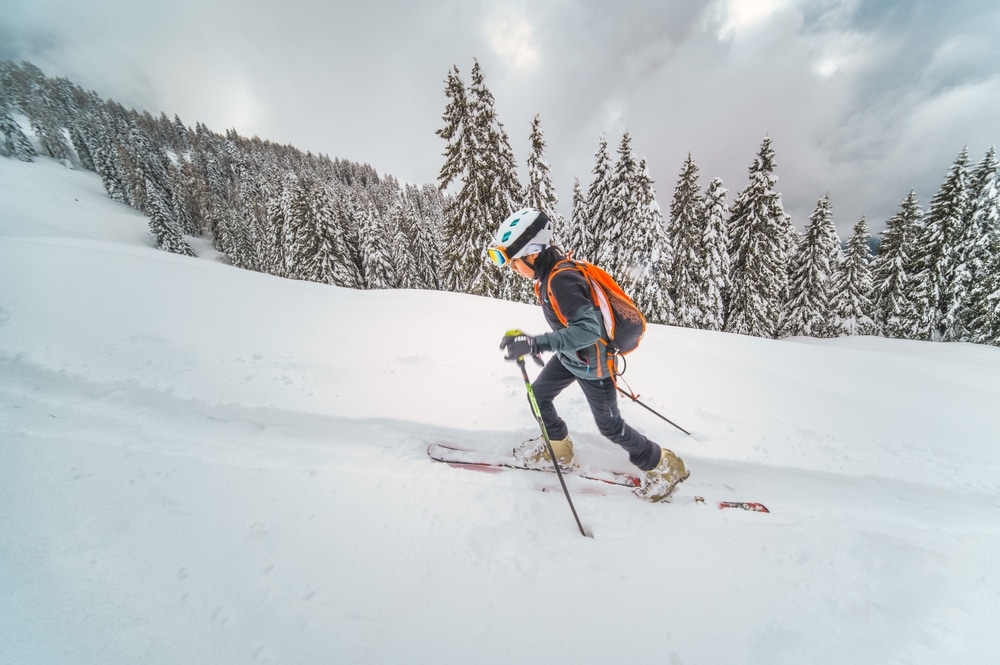
Uphill skiing requires different techniques than downhill skiing. Here are some essential tips to help you master uphill travel.
Kick Turns
On steep hills, kick turns are essential for direction changes. Lift one ski, turn it 180 degrees, and bring the other ski around to match to do a kick turn. Before attempting kick turns on more challenging terrain, practice them on easy slopes.
Skin Track
The trail you make as you go up the mountain is known as the skin track. Striking the ideal balance between a direct path and a reasonable inclination is crucial. A well-laid skin track can help you preserve energy and keep your pace consistent.
Grip the Snow
Properly engaging your skins to grip the snow is crucial for uphill skiing. To optimize traction, ensure your skins are in good condition and exert equal pressure with each step.
Steep Slopes
Maintaining a steady rhythm and maintaining your weight center when climbing steep slopes is critical. Consider using kick turns to shift directions and continue climbing if the incline is too difficult.
Walking Mode
Switching to walk mode in your boots will increase your comfort and flexibility during the ascent. Remember to return to ski mode before descending.
Uphill Skiing Etiquette and Safety
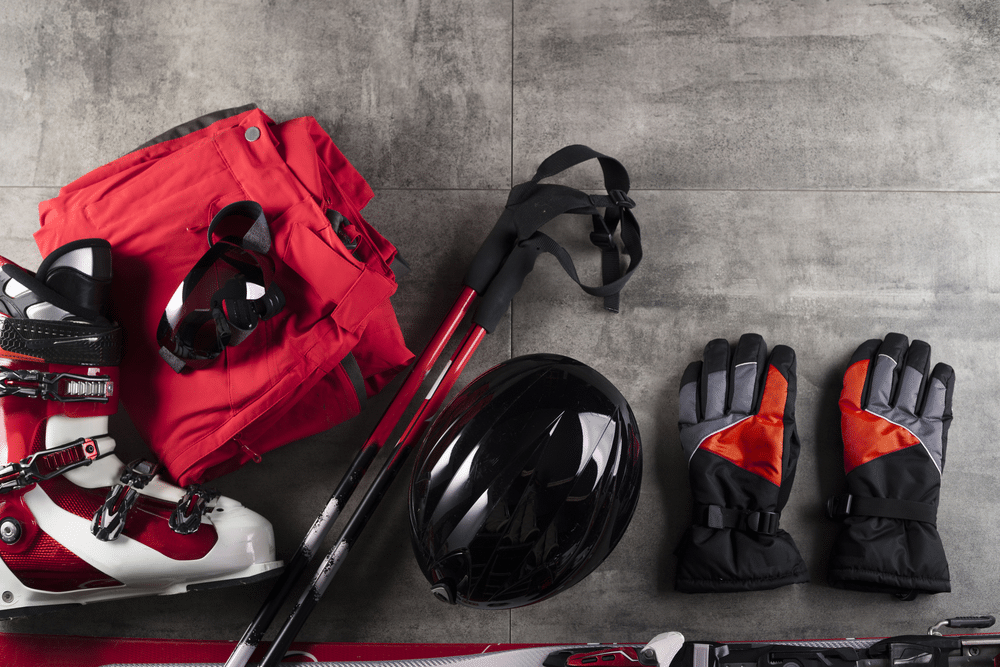
As uphill skiing becomes more popular, it’s essential to practice good etiquette and prioritize safety, especially in busy ski areas.
Lift Lines
Always yield to downhill skiers when crossing trails or merging onto a slope. Keep an eye on your surroundings and avoid crossing lift lines or trails in the middle.
Operational Hours
Be mindful of when your preferred ski resort is open for upward access. Uphill transport is permitted during certain hours at several resorts, usually after business hours, to prevent conflicts with downhill skiers.
Ski Mountaineering
If you’re venturing into more remote areas or attempting ski mountaineering, ensure you’re equipped with the necessary safety gear, including an avalanche beacon, probe, and shovel. It’s a good idea to tell someone of your plans and travel in a group.
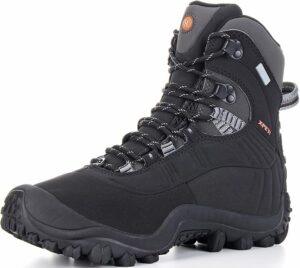
Product Details
- Sole: Ethylene Vinyl Acetate, Rubber
- Outer material: Rubber
- Closure type: Lace-Up
- Water resistance level: Waterproof
- Extended Length 110 Centimeters
Choosing the Right Ski Areas for Uphill Skiing
There are differences throughout ski areas when it comes to skiing uphill. Several ski areas now have dedicated access roads that go upwards for those who would rather climb instead of using the lifts. Before leaving, verify the operating hours and regulations regarding uphill access at your preferred ski resort.
Aspen Snowmass
Aspen Snowmass is one of the premier destinations for uphill skiing in North America. The resort offers several different, varying-difficulty uphill entry paths, offering something for all skill levels of uphill skiers, regardless of experience level.
Backcountry skiing
Backcountry skiing is an excellent choice for people who want to escape crowds. It involves going outside the lines of designated ski resorts into unmarked, ungroomed terrain. This requires sophisticated abilities and an understanding of avalanche safety.
Black Diamond
If you’re up for a challenge, seek out black diamond skiing routes that offer steeper and more technical climbs. Experienced uphill skiers should only tackle these routes as they are not for the fearful.
Uphill Skiing Etiquette and Safety

As uphill skiing becomes more popular, it’s essential to practice good etiquette and prioritize safety, especially in busy ski areas.
Lift Lines
Always yield to downhill skiers when crossing trails or merging onto a slope. Keep an eye on your surroundings and avoid crossing lift lines or trails in the middle.
Operational Hours
Be mindful of when your preferred ski resort is open for upward access. Uphill transport is permitted during certain hours at several resorts, usually after business hours, to prevent conflicts with downhill skiers.
Ski Mountaineering
If you’re venturing into more remote areas or attempting ski mountaineering, ensure you’re equipped with the necessary safety gear, including an avalanche beacon, probe, and shovel. It’s a good idea to tell someone of your plans and travel in a group.
Advanced Techniques for Uphill Skiing
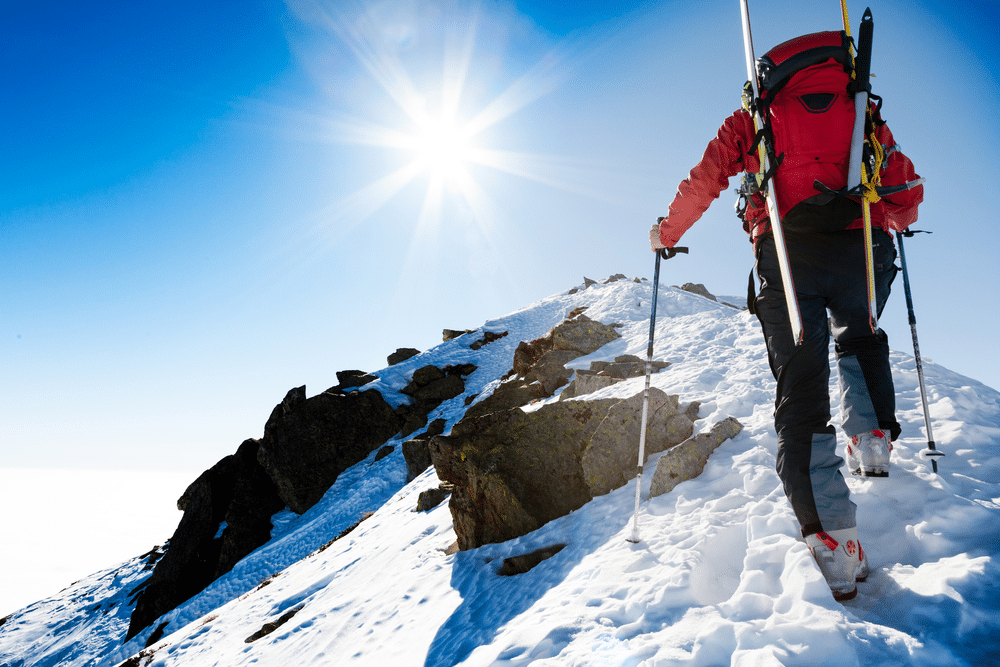
Once you’ve mastered the basics of uphill skiing, you can start working on advanced techniques to improve your efficiency and performance.
Ski mountaineering
This activity entails ascending and descending more difficult terrain, frequently using ice axes, crampons, and ropes. Only experienced skiers should attempt this advanced kind of uphill skiing.
Kick Turns
Practice your kick turns to become more rapid and effective, particularly when climbing steep hills. To gain confidence and control, practice on various terrain types.
Grip the Snow
Try various methods to apply pressure to your skins, such as changing your stride length or stance. This can assist you in keeping a steady grip on the snow even in difficult circumstances.
Enjoying the Descent: Transitioning to Downhill Skiing
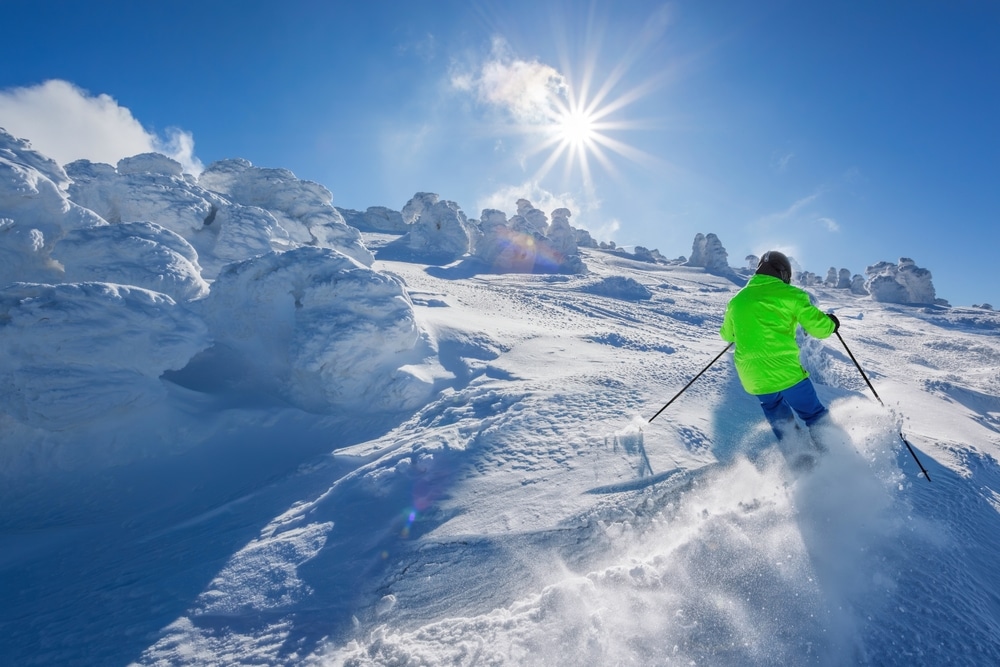
One of the best parts of uphill skiing is the reward of a thrilling descent after the climb. Transitioning from uphill travel to downhill skiing requires a few key steps:
Remove Skins
Once you’ve reached the top, remove your skins and store them in your backpack.
Switch Modes
Transition your boots from walk mode to ski mode and lock your heels into your bindings.
Choose Your Line
Pick a descent route that matches your skill level and enjoy the ride down.
Conclusion
Uphill skiing is a challenging and rewarding sport that offers a unique way to experience the mountains. With the right skiing gear, proper techniques, and a commitment to safety, you can master the art of uphill travel and enjoy the thrill of the climb. Whether you’re exploring the trails at Aspen Snowmass, venturing into the backcountry, or tackling a black diamond route, uphill skiing provides endless opportunities for adventure. So, gear up, hit the skin track, and discover the exhilarating world of uphill skiing.

